

Egg and Soda Science Fair Experiment: Tooth Decay Project
Krystal DeVille
July 10, 2022
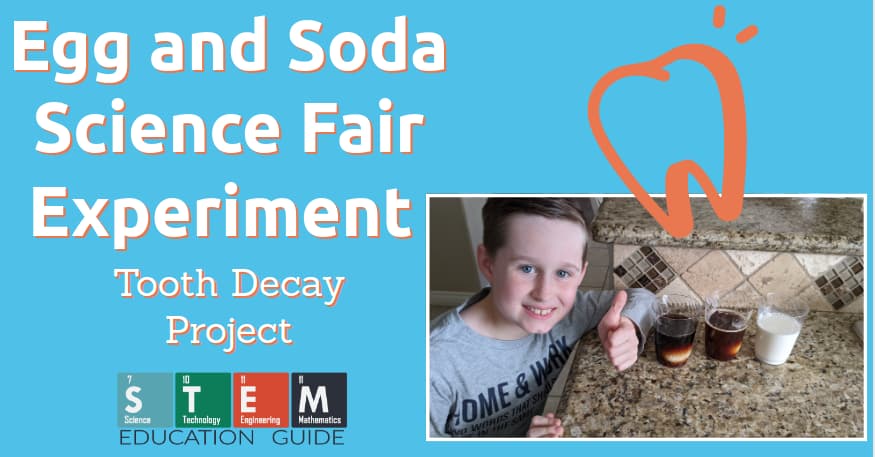
Healthy teeth are essential for your overall health!
They make it a breeze for our mouths to form words and flash million-dollar smiles. This importance in our lives is why we must pay attention to a potentially adverse problem: tooth decay .
Are you having a hard time getting your child to brush their teeth? If so, it might be time to bring out the big guns by introducing the egg and soda science fair experiment to explore the concept of dental health.
Theoretically, a hard-boiled eggshell works similarly to the enamel on your child’s tooth. It protects the dentin (the soft inside of a tooth) from damage.
Unfortunately, some of our dietary habits make it difficult for the enamel to protect our teeth from damage. This science experiment will demonstrate the repercussions of our choices on our bodies, and why tooth health matters. Read on!
Table of Contents
Egg and Soda Science Fair Experiment

What You Need
The good news is that the egg and soda science fair experiment doesn’t require a myriad of pricey supplies. They’re wallet-friendly and there’s the likelihood that you have most of them in your home. If not, they’re readily available online and can be delivered to your doorstep.
- Three clear plastic cups
- Toothpaste and a toothbrush
- Three white-shelled hard-boiled eggs
Before the Egg and Soda Science Fair Experiment
Start by talking to your child about the importance of dental hygiene practices that include brushing their teeth twice a day.
Ensure you explain how certain activities, drinks, and food, can damage and stain teeth. You’ll also want to delve into how the consumption of acidic drinks can erode tooth enamel .
Ask your child to name a few types of drinks that are detrimental to their teeth. They may list juice, soda, or coffee because of the acid and sugar.
Furthermore, you can ask your child to think of drinks that can boost the health of their teeth. They might answer water and milk.
You can also find out if they believe brushing after the consumption of some of the harmful drinks can lower the risk of damage to their teeth.
Explain the Egg and Soda Science Fair Experiment
To spark their curiosity and pique their interest, inform your child that you have a way of discovering the repercussions of leaving those harmful drinks on their teeth overnight.
With a boiled egg in hand, demonstrate how it resembles their teeth (a thin and sturdy outer shell and a soft inside). Take the time to explain the consequences of leaving the egg soaked in soda overnight, compared to water.
Additionally, consider various types of soda such as colas that have varying effects compared to their clear lemon-lime counterparts.
Another fun experiment I did with my son was the Cloud in a Bottle project. You’ll make clouds inside your house in a few different ways.

Perform the Egg and Soda Science Fair Experiment

It’s a straightforward experiment that can be performed by following the steps below.
- Boil the eggs, ensuring you have a few extra ones if some of them crack during boiling. A cracked shell on your hard-boiled egg will alter the outcome of the experiment.
- Help your child fill each of the plastic cups whereby one has water, another has diet soda, and the third contains regular soda.
- Once the eggs have boiled have your child put one in each plastic cup then leave them overnight.
- Check on the eggs the following day. You may need to pour out the liquid from each cup to examine how each egg has been affected. You’ll notice the egg in the cola has been stained.
- Discuss the changes you notice in each egg. Ask your child what they believe occurred and the solution to get the eggs back to their original state.
- Give your child some toothpaste and a toothbrush and have them attempt to brush the stains off the eggshell.
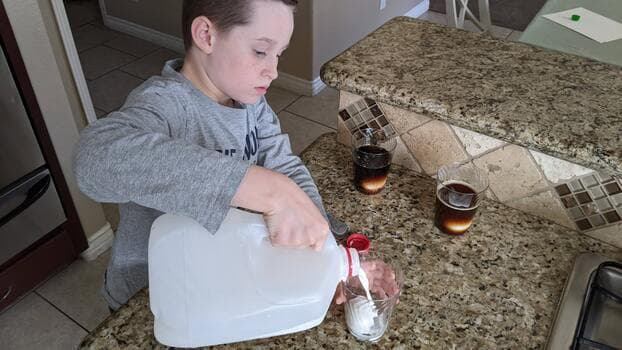
As a variation, you can boil a few additional eggs and add cups with coffee, clear soda, vinegar, and orange juice for comparison.
Understanding the Results of the Egg and Soda Science Fair Experiment

Each liquid provides essential information on how certain liquids negatively impact our teeth. The egg in water will have no changes because the acidity (pH) of water is close to your body’s resting PH. Water won’t break down your teeth, making it one of the healthiest liquids to consume.
Although the soda pop will result in softening of the outer shell of the egg, certainly not as much as vinegar. Most importantly, the soda pop will result in a discoloration of the white egg, particularly if the soda is dark. Its acid levels can result in the weakening or demineralization of the tooth enamel.
Lastly, the acidic level of vinegar is detrimental to your teeth during an acid attack. Every time you consume starch or sugar, the bacteria in your mouth utilize it to form the acid that is represented in a tooth decay experiment with vinegar.
The acidic vinegar breaks down the minerals in the eggshell just like acid does to the outer shell of your tooth. After a few days, there’s barely any shell left.

Preventing Tooth Decay
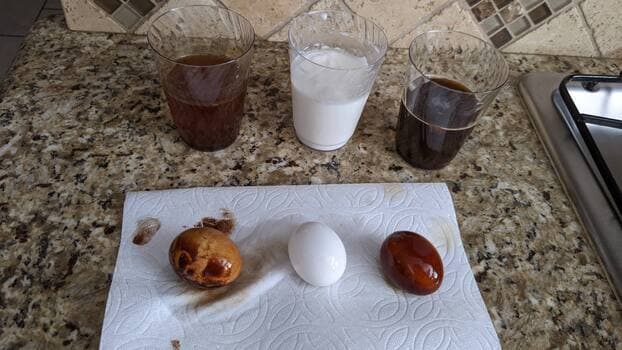
Aside from brushing your teeth every day, are there other ways to curb tooth decay? Although dentists recommend fluoride, how effective is it? You can find out by filling two clear jars with vinegar.
Then, coat one eggshell layer one eggshell entirely with gel fluoride toothpaste and put it in one jar, and put an uncoated eggshell in the second jar.
Keep an eye out for signs of decay on the uncoated eggshell as you note the condition of the coated eggshell. You shouldn’t notice decay on the coated eggshell.
The Takeaway
You and your child can learn two main things from this experiment. Firstly, the acid contained in soda and vinegar has the potential to severely erode tooth enamel.
Secondly, it takes more than just a few quick swipes with a toothbrush to get teeth spick-and-span. Therefore, incorporating healthy food choices in addition to brushing teeth every day with fluoride toothpaste is the key to preventing teeth erosion and decay.
Continue with the fun science experiments with some chemistry. Please take a look at our article full of fun and easy baking soda experiments for kids .
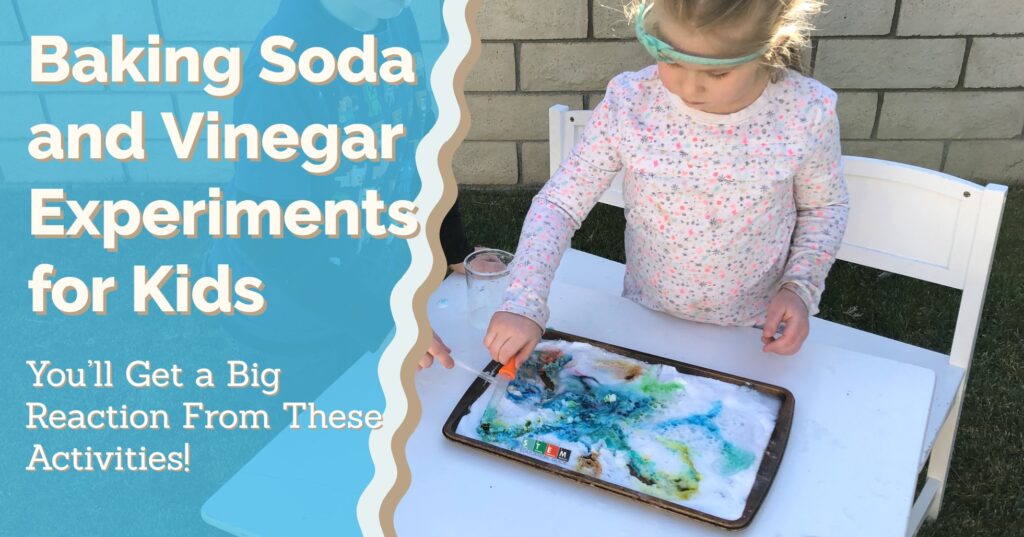
2 thoughts on “Egg and Soda Science Fair Experiment: Tooth Decay Project”
Marvelous, simple explanation
This is sooo helpful for me thank you.
Leave a Comment Cancel reply
Save my name, email, and website in this browser for the next time I comment.
most recent

Activities and Games , Toy Gift Guides
Best stem subscription boxes for kids: hands-on reviews.
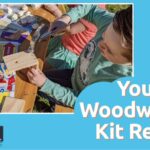
Activities and Games , Engineering
The young woodworkers kit club review (hands-on + coupon code).

Science , Activities and Games
Mel science review (hands-on + coupon code).

Activities and Games , Science
How to make your own bouncy balls at home.

12 of the Coolest Winter Science Experiments & STEM Activities

Snowflake Science Activity: How to Collect & Observe Snowflakes Under a Microscope

Microscope Activities for Kids – Fun Experiments Kids Will Love
STEM Education Guide
[email protected] STEM Education Guide 9125 SVL BOX Victorville, CA 92395
Your Compass for STEM Discovery
© 2024 STEM Education Guide
All Science Fair Projects
1000 science fair projects with complete instructions, tooth decay experiment with eggs.

Method & Materials
Why do this project, also consider, full project details, related videos.
Related Science Fair Project Ideas

Tooth Decay Science Fair Project For Kids (Sweet!)

What’s sugary and sticky and bad for your teeth? Sugar.
Kids do love and will always love sugary foods. This makes it increasingly hard for you as a parent to tell them off when they stretch for that extra candy bar.
If a regular warning hasn’t yet done the magic for you, try out this simple yet fun tooth decay science fair project using eggshells to aid in learning why sugar is bad for their teeth.
Did you know a healthy bite of cheese after every meal reduces the chances of getting tooth decay by neutralizing acidity left by food in your mouth?
It can be a real challenge explaining to your youngster what tooth decay is in the first place.
That’s why I have this pre-work experiment to deal with just that.
Science Fair Project On Tooth Decay
#1 rotten teeth science fair project.

The goal here is to lay a solid foundation of what really happens when a tooth decays.
To do this, you are going to need apples since they are easily available and are just perfect for this. The structure of a tooth consists of a hard outer coating that protects the inner parts of the tooth much like the skin of an apple protects the juicy part.
This demonstration perfectly illustrates what happens when the protective layer of the tooth gets damaged.
What are the tools for work?
For this super simple experiment, you’ll need the following:
One apple is going to act as a control experiment to compare against.
- Poke holes in the first apple with the prongs of the fork. This illustrates how the enamel can get damaged resulting in cavities.
- Put each apple on a clean surface and leave them for 24 hours.
- After 24 hours, use the knife to cut both of them into halves.
What you’ll find
The unpunctured apple should appear normal with a clear white inside. Have them take a guess of what the second apple looks like inside.
Unlike the first apple, the punctured apple has brown stains around the poked holes.
Similar to the apple’s skin, the enamel provides a protective layer to the tooth. When it is damaged – for instance has cavities – it leaves a way for bacteria to enter the tooth.
What is the science behind tooth decay?
Food often sticks between our teeth and if not removed, plaques are formed. When sugary foods are consumed, they react with the bacteria found in plaques to form acids.
These acids are responsible for gradually dissolving the tooth enamel, eventually forming cavities. Cavities give room for bacteria to decay the delicate inner tissues of the tooth.
From this demonstration, they should be able to deduce that the primary cause for tooth decay is having tooth cavities.
‘A whole apple every day keeps the dentist away’
With this foundation, it becomes easier to progress to how different drinks or foods can cause cavities that in turn lead to tooth decay.
Tooth Decay Science Projects Using Egg Shells

It’s not customary to perform a science fair project (or even a quick STEM activity ) on tooth decay with a real tooth.
First, it is important to acknowledge that teeth can get damaged in two ways.
The enamel can get discolored by continued consumption of certain drinks. Or worse, if not properly taken care of, certain drinks can wear off the enamel causing tooth decay.
In the following two experiments, we’ll use egg shells since they are made of the same material. The types of food and drinks that we consume everyday have a great impact on the health of our teeth in general.
#2 Stained Tooth Experiment
Everyone wants a brilliant smile with white teeth lightening up their face. Maintaining healthy white teeth is essential.
This project focuses on the staining effect of some drinks we take frequently.
What to collect
For an awesome experience, it pays off to get a little messier. You can make a model of the lower mouth using play dough.
Gather the following:
- Play dough (choose a red or pink color to make the gums)
- Two raw or hard boiled eggs
- Tea or coffee
- Some toothpaste
The idea here is to soak the eggs in the two liquids for 7 days and observe the changes of the surface of the egg shell.
- Prepare the play dough to your desired color and model a big jaw with troughs for the tooth models.
- Make concentrated coffee/tea by mixing a lot of it with some water.
- Pour the coffee/tea into the 2 jars.
- Place the first egg into the first jar.
- Smear a generous amount of toothpaste onto the surface of the second egg and place it inside the other jar.
- After 7 days, remove both eggs and set them on the jaw model with the remaining four eggs.
To make it more interesting, you can use an abstract popsicle stick sculpture to make a nice rack for the jars!
What happens
After 7 days, you should observe that the egg covered with toothpaste isn’t nearly as stained as the egg without toothpaste.
In comparison to the other eggs, the one covered in toothpaste appears almost similar.
Toothpaste provides protection to the enamel thus preventing staining .
Tea and coffee contain tannins which tend to stain teeth if not cleaned properly. Similarly, most soft drinks contain artificial colorings which can stain our teeth with time if we do not brush our teeth regularly.

#3 Corroded Eggshell Tooth Decay Experiment
Aside from the conventional tooth decay science fair project which soda decays teeth the most, you can try this cool project with vinegar that completely eats away the entire shell.
This leaves behind a bouncy translucent ball for an egg which feels pleasant to play with in your hands.
Guide your genus as they explore the wonderful science behind acid’s effect on teeth .
What you’ll need for this experiment
- Carbonated soda – preferably still fizzy
- White vinegar
- You can include the play dough model for comparison and display at the fair to show the differences in corrosion levels
Experimental procedure
Soaking the eggs serves to demonstrate continued use of the drinks without proper teeth hygiene.
- Pour equal amounts of water, soda and white vinegar into the 3 jars.
- Place the 3 eggs into each of the jars.
- Leave them to soak for 3 – 5 days.
- Remove the eggs after the soaking period and set them on the jaw model.
What happens to the eggs?
The egg in vinegar appears like a semi-solid jelly while the one soda is brittle or slightly damaged.
The egg soaked in water has no superficial damage and appears normal in comparison to the other eggs.
Conclusions
Acids present in the vinegar and soda react with the calcium carbonate present in the eggshell thus weakening the structure of the eggshell.
The stronger the acid, the more damage it causes on the shell.
Therefore, the stronger acid in the vinegar completely eats away all the eggshell after 3 days. Don’t be surprised if the egg becomes bouncy.
You should be keen to cash in on their growing curiosity to slide in the idea that acids react with bases – calcium carbonate in the tooth enamel.
Encourage brushing of teeth as toothpaste is basic and neutralizes the acids present in some foods we eat.
Frequently Asked Questions
What is a good substitute for teeth in a science experiment.
A good substitute for teeth in a tooth decay science experiment is an egg. The tooth’s enamel is made of the same material as an eggshell, calcium carbonate . This gives a very close illustration of how some drinks affect the enamel.
Which soda decays the most teeth?
Non-cola soda decays teeth the most. They cause close to 5 times the damage observed with darker coloured soda like Coke and Pepsi.
How does sugar affect tooth decay experiment?
Sugar present in most sugary beverages sticks to the surface of the eggshell. The bacteria found naturally on the surface of the egg reacts with the sugar to form an acid which gradually dissolves the eggshell, eventually leading to damage.

Charles Duya is an experienced STEM Educator and Content Writer. Driven by his passion for STEM, he takes pride in developing fresh and high quality projects targeted at inspiring all ages to take up STEM. In addition to his primary role as an educator, he also builds engineering projects and has been recognized for his notable contributions in science and innovation.
Editor’s Picks

7 Best LEGO Star Wars Sets | Our Top Picks of All Time!

Best LEGO Creator Sets – Take Your Pick From These 7 Gems!

How to Use a Metal Detector: 8 Essential Tips to Get the Most of It

Best Metal Detector for Kids: 5 Top Picks (+ Buying Guide)

Best 2+ Player Cooperative Board Games (Top 6 in 2024)

MEL Chemistry Review: Is Your Child the Next Bill Nye?
A Science Fair Project On Tooth Decay
Healthy teeth are vital when you chew food, which is important for digestion. They make it easier for our mouths to form words and – let's not forget – they make radiant smiles. Because teeth are so important, tooth decay can be a serious problem. A science fair project provides an opportunity to demonstrate how tooth decay happens and how to prevent it. You'll need to create many samples for this project, and you probably don't have a collection of teeth for them. Don't worry. Eggshells are a great substitute, and you can get as many of those as you need.
Causes of Tooth Decay
You've probably heard that sweet foods are a major cause of tooth decay, but that leads to two important questions with demonstrable answers. The first question is "Does the sugar in these foods cause the decay or is it something else?" The second question is "How do you prevent decay? "

1. Pour liquids into mason jars
To answer the first question, soak eggshells in a variety of solutions that may or may not cause decay. Eggshells are a good substitute for teeth because they are made from chemicals similar to those that form tooth enamel.
2. Lower eggs into each jar
You can choose the solutions based on what you think are the most likely causes of decay, but one of the solutions should be pure sugar water, because you specifically want to know if sugar is the culprit. Here are some other possibilities:
• Cola • Mineral water • Lemonade • Milk • Vinegar
3. Close jars and let sit for one week
Let the samples sit for a week and then note the condition of the eggshells and write down the results.
4. Remove from jars and note conditions
You'll probably notice that the eggshells that soaked in cola and vinegar are the most affected. In fact, there may be nothing left of them. On the other hand, the eggshells in mineral water and sugar water are mostly unaffected, while those in lemonade and milk may or may not show signs of decay.
The Explanation
Dentists warn about sweet foods because sugar feeds bacteria living in a layer of plaque on the surface of tooth enamel. These bacteria create acids through their metabolism, and it's the acids that cause decay.
Cola contains phosphoric acid, and vinegar contains acetic acid. Both acids are concentrated enough to soften and partially dissolve eggshells. Sugar water and mineral water aren't acidic, so the eggshells in these liquids should be unaffected. Lemonade contains citric acid, and milk contains lactic acid, but these are less concentrated than the acids in cola and vinegar, so you may or may not see damage to the eggshells immersed in these liquids.
As a follow-up, you might let the eggshells in the milk and lemonade sit for a while longer to see how long it takes for them to show signs of decay.
Preventing Decay
Besides cleaning your teeth regularly, is there any way to prevent decay? Dentists recommend fluoride, but does it really help? Find out for yourself with eggshells and two jars filled with vinegar. Coat one eggshell completely with gel fluoride toothpaste and put it in one jar and then put an uncoated eggshell in the other jar. Watch for signs of decay on the uncoated eggshell and when you see them, note the condition of the eggshell you coated with toothpaste. If fluoride works, you shouldn't see any decay.
Follow up this demonstration by allowing the coated eggshell to remain in the vinegar to see how long it takes to start decaying.
- Kids Health: Mouth and Teeth
- MadSci Network: How Are Teeth Similar to Eggshells?
Cite This Article
Deziel, Chris. "A Science Fair Project On Tooth Decay" sciencing.com , https://www.sciencing.com/science-fair-project-tooth-decay-6085859/. 13 September 2019.
Deziel, Chris. (2019, September 13). A Science Fair Project On Tooth Decay. sciencing.com . Retrieved from https://www.sciencing.com/science-fair-project-tooth-decay-6085859/
Deziel, Chris. A Science Fair Project On Tooth Decay last modified August 30, 2022. https://www.sciencing.com/science-fair-project-tooth-decay-6085859/
Recommended

Tooth Decay: An ‘Eggciting’ Science Experiment for Kids
- March 20, 2018
- Patient Education
Tooth Egg Experiment
If you’re looking for a fun way to teach your children about tooth decay and proper oral health, it’s time to do the Tooth Egg Experiment. The classic experiment is one that many of us can remember doing in our youth. It shows how an acid attack can destroy the enamel, or the outer surface of our teeth. The materials required are commonly found in most households; so most parents won’t have to sweat a trip to the store.
Ready for a Dental Checkup With a Pediatric Dentist? Call Our Muscatine Office (563) 607-5979
Materials for the Tooth Egg Experiment
- White Eggs (one for each liquid tested, we recommend at least three)
- Diet Soda Pop
- Make hard boil eggs. Place the eggs in a pot of water and ensure there is enough water to cover the eggs as the water boils off. Bring the water to boil over high heat, once boiling cover the eggs, and remove them for heat and let them sit for eight to ten minutes. Drain the water, and allow the eggs to cool.
- Place each egg in a clear cup.
- Add each selected liquid to the cups individually and ensure the liquid covers the eggs
- Let the eggs sit for 2-3 days
- Remove the eggs and inspect them for changes! Your kids will be amazed.
Discuss The Results
Understanding the results of the Tooth Egg Experiment is important. Each liquid can provide important information on how certain liquids affect our teeth. The egg in water will have no changes, this is because the acidity (pH) of water is very close to the resting pH of our body. Water will not breakdown our teeth, and is one of the healthiest liquids we can drink.
The soda pop will cause some softening of the outer shell of the egg, but not as much as the vinegar. Most notably the soda pop will cause a discoloration of the white egg; especially if the soda pop is dark. The acid content of soda pop can lead to the demineralization, or weakening, of our tooth enamel.
Lastly, the acidic content of vinegar shows the damage that is done to our teeth during an acid attack. Each time we consume a sugar or starch, bacteria in our mouth will utilize it to create acid. This acid is represented in the Tooth Egg Experiment by vinegar. The acidic vinegar breaks down the minerals in the egg’s shell just as the acid does to the outer shell of our tooth. After a few days there is almost no shell remaining.
As each of these experiment variations showcases the potential for tooth decay, discuss the results with your children and talk about healthy food choices and the importance of a balanced diet.

Please Share This

Dr. Jarod has received advanced training in behavior management, sedation, hospital dentistry, trauma, special health care needs, interceptive orthodontics, space maintenance, oral hygiene, and dietary counseling. His energetic personality allows him to relate to kids on an individual level. He understands the importance of children having a positive dental experience and strives to provide the best care tailored to each child’s needs. Dr. Jarod enjoys educating children and their families on the importance of oral health so they can establish good habits for a lifetime of smiles. His goal is to develop relationships with each of his patients to establish a dental home that is welcoming from infancy through adolescence.
Related Posts

Frenectomies in Muscatine are the best way to resolve tongue and lip ties. But once…

If your child has tongue or lip ties, they may need a frenectomy. Tongue and…

Is the tooth fairy real? We've all heard the stories about how if you leave…
- previous post: How to Conquer Dental Anxiety in Children
- next post: 10 Flossing Mistakes Many Children (and Parents) Make

IMAGES
COMMENTS
Pour the same amount of fizzy drink, vinegar, water and tea or coffee into your jars. Add a whole raw egg still in it's shell to each, cover an extra egg with toothpaste and also place in tea/coffee. Leave for approximately three days. Remove the eggs. Rinse the egg kept in vinegar and rub gently until the shell comes away.
A cracked shell on your hard-boiled egg will alter the outcome of the experiment. Help your child fill each of the plastic cups whereby one has water, another has diet soda, and the third contains regular soda. Once the eggs have boiled have your child put one in each plastic cup then leave them overnight. Check on the eggs the following day.
Yup, tooth enamel, which covers our teeth and protects them, is even stronger than bone. So once then enamel is damaged, it's not possible to 100% restore it. This eggshell decay activity is excellent to show your kids what happens to their teeth if they keep eating or drinking certain liquids without brushing. The Tooth Enamel Egg Experiment
This is a longer tooth decay experiment in which eggs are soaked in different liquids for 24 and 48 hours. The video suggests using white eggs to easily observe any staining caused by vinegar, soda, or water. What do you think will happen to the egg shells in vinegar, soda and water?
In the following two experiments, we'll use egg shells since they are made of the same material. The types of food and drinks that we consume everyday have a great impact on the health of our teeth in general. #2 Stained Tooth Experiment. Everyone wants a brilliant smile with white teeth lightening up their face.
Vinegar ( which is acidic) dissolves the calcium carbonate in the egg shell, allowing it to be washed away. You should find just the membrane of the egg is left behind as the egg shell is dissolved. Imagine if that was your tooth! Challenge Cover half an egg with toothpaste before placing it in the coffee or fizzy drink.
1. Pour liquids into mason jars. To answer the first question, soak eggshells in a variety of solutions that may or may not cause decay. Eggshells are a good substitute for teeth because they are made from chemicals similar to those that form tooth enamel. Advertisement. 2.
THE EXPERIMENT. 1. Place one egg in each glass. Cover the first egg in water, the second in fluoride mouthwash and cover the third egg in cola. 2. Allow the eggs to sit in the liquids overnight. 3. Remove the eggs from the liquids and examine the eggshells. Questions for students.
1. Label each cup with the liquid and carefully add a hard-boiled egg to each cup. Optional: include cup and put some tooth paste on a small area or whole egg before soaking. 2. Pour 1 cup of each type of drink into its own cup. Make sure to include one cup with water (control). Soak for 48 hours at room temperature or refrigerator.
Bring the water to boil over high heat, once boiling cover the eggs, and remove them for heat and let them sit for eight to ten minutes. Drain the water, and allow the eggs to cool. Place each egg in a clear cup. Add each selected liquid to the cups individually and ensure the liquid covers the eggs. Let the eggs sit for 2-3 days.